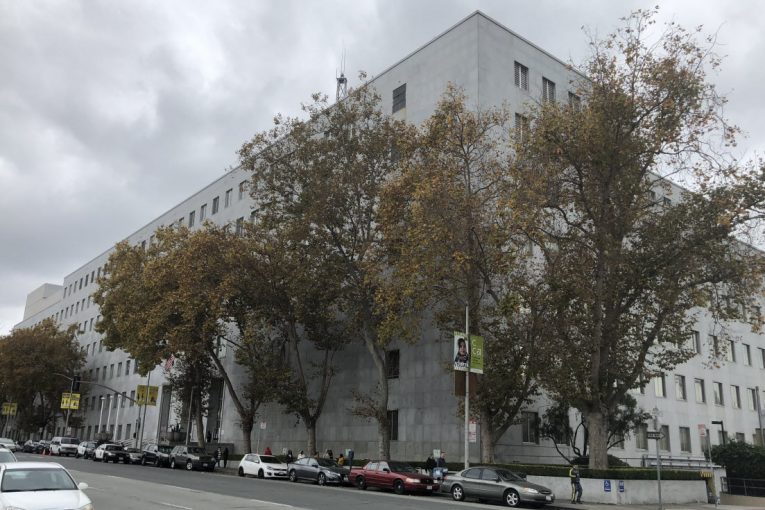

By Ransom Bergen
In a 1437 evidentiary hearing last Friday, the court revisited the 16-year-old sentence of a man convicted of gang-related second-degree murder. This defendant did not personally kill anyone; he was the driver of the vehicle that the killer and two other perpetrators had been inside of prior to the murder.
The prosecuting attorney was Assistant District Attorney Ryan King. The defendant was represented by defense attorneys Michael Gaines and Attorney Sarah Potter.
Before Senate Bill 1437 came into effect January 1st of this year, someone could be found guilty of murder by participating in a felony that led to murder, even if they did not commit the actual killing or have knowledge the killing would take place. For example, if two friends decided to rob a store, and the second friend killed the store owner in the process, both friends could be sentenced to life in prison without the possibility of parole or the death penalty, even when the first friend had involvement only in the felony (robbery) that led to the murder and not the murder itself.
However, 1437 amended this rule. Now a person must actually kill somebody, assist the killer while themselves having intent to kill or be a “major participant” in the felony while acting with “reckless indifference to human life,” to be charged with felony murder.
SB 1437 limited who could be convicted of first-degree felony murder and eliminated second-degree murder based upon felony murder and the natural and probable consequences doctrine.
Sixteen years ago the Defendant was charged with first-degree premeditated murder and the prosecution argued the defendant had ordered the victim’s death. The jury, however, found him guilty of second-degree murder and that is where the confusion began. Sixteen years ago the jury was instructed of second degree implied malice murder and second degree natural and probable consequences murder. However, only half of the natural and probable consequences jury instruction was read to the jury. The half that was read dealt with language dealing with reasonably probable. The part that was not read dealt with the underlying crimes. Ms.
 Potter seized on this and argued the Defendant was convicted under a natural and probable theory of murder.
Potter seized on this and argued the Defendant was convicted under a natural and probable theory of murder.
According to testimony given by a juvenile sixteen years ago who had been inside the car, the defendant spoke the words, “he’s a scrap, go get him” —”him” meaning the victim. The prosecution argued that the defendant had, in effect, given the three other gang members inside the car an order to go murder the victim, who subsequently went and stabbed the victim eighteen times.
The prosecution argued this quote can only be considered a command to commit murder because the defendant was in a position of authority, and that the words actually referred to killing the victim. The prosecution attempted to provide evidence that the defendant was truly the one who called the shots.
At trial, sixteen years ago testimony from experts in gang culture suggested that the defendant had seniority among the group that had been in the car prior to the murder. He was the oldest (with the possible exception of a third participant who is still unknown). Along with the actual killer, the defendant had been in the gang the longest. Additionally, he had been the one driving the car. Basically, the prosecution maintained that the quote showed the defendant’s implied malice.
Sixteen years ago the defense argued that “go get him,” was not a command to kill. Even if it was a command, Ms. Potter pointed out the prosecution had only circumstantial evidence to support the argument that “go get him” meant “kill him,” because the other interpretation was to go “beat him up.”
Ms. Potter argued based on the record before the court it was clear that the jury was given instructions that dealt with both natural and probable consequences and implied malice. That based upon this record the people could not prove beyond a reasonable doubt that the defendant was convicted of murder based upon a theory of implied malice.
This is significant because under Senate Bill 1437, any murder conviction that relied on the “natural and probable consequences” doctrine can be reevalutated for resentencing.
Prosecuting Attorney King argued that the murder charge did not rely on the natural and probable consequences doctrine because the prosecutor never argued a theory of murder based upon “natural and probable consequences.” He insisted it was the defense who requested that instruction. Ms. Potter, however, argued it was irrelevant who requested the instruction. What was relevant was that the jury may have relied on the instruction and the court of appeal opinion focused on the language reasonably probable. She pointed out that the judge read the first half of the natural and probable consequences instruction to the jury prior to its deliberation, so it is now impossible to determine what theory the jury’s based its conviction upon.
In essence, Ms. Potter argued that, under today’s law, the defendant would not be convicted of murder
The hearing will continue on January 10th.
